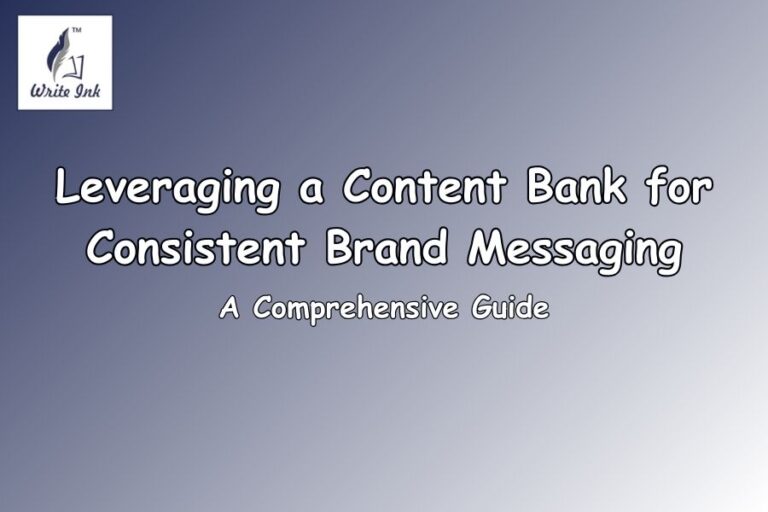Crafting an Effective Social Media Content Plan: Strategies for Success
In today’s digital age, social media has become an indispensable tool for businesses and individuals alike to connect, engage, and promote their brands or personal endeavors. At the heart of any successful social media strategy lies a meticulously crafted content plan. This article delves into the intricacies of a social media content plan, elucidating its definition and highlighting the paramount importance of a strategic approach.
What is a Social Media Content Plan

Understanding the Concept
At its core, a social media content plan is a series of steps you take to make your posts on social media have the most impact. It’s like a roadmap that helps you figure out what to post, when to post it, and who you’re posting for. To make this plan, you need to look closely at who your audience is, what they like, and how they behave on social media. You also need to check out what your competitors are doing and what’s happening in your industry. With all this information, you can create content that really connects with your audience, helps you build relationships, and gets you the results you want.
Objectives of a Social Media Content Plan
The main goals of a social media content plan can change depending on your business, what you want to achieve, and who you’re trying to reach. But generally, here are some things most businesses aim for:
Increasing Brand Awareness: When you share interesting and useful content regularly, you get noticed more on social media. This means more people become aware of your brand and what you offer.
Driving Engagement: Social media lets you talk directly with your audience. A good content plan can start conversations, get people to like, share, and comment on your posts, and help them feel like part of your brand’s community.
Generating Leads and Conversions: It’s not just about getting likes; you want to turn those interactions into sales. A smart content plan can guide people through the process of buying from you. It might include things like tempting offers or helpful information to convince them to make a purchase.
Establishing Thought Leadership: If you share content that’s insightful and helpful, people start to see you as an expert in your field. This builds trust and loyalty among your followers.
In short, a social media content plan is like a roadmap to success in the world of social media marketing. By focusing on strategy, making sure your content is relevant, and being genuine, you can use social media to achieve your goals and build strong connections with your audience.
What Should a Social Media Plan Include

Key Components of a Comprehensive Plan
Objectives: Clearly define the goals and objectives of your social media efforts. These may include increasing brand awareness, driving website traffic, generating leads, or improving customer engagement.
Target Audience: Identify your target audience and understand their demographics, interests, and behavior on social media.
Content Strategy: Plan the types of content you will create and share on social media, as well as the frequency of posting. Think about social media content plan ideas that resonate with your audience.
Platform Selection: Choose the social media platforms that are most relevant to your target audience and align with your objectives.
Measurement and Analytics: Establish key performance indicators (KPIs) to track the success of your social media efforts and regularly analyze data to inform future strategies.
Setting SMART Goals
- Specific: Clearly define your objectives and ensure they are specific and measurable.
- Measurable: Establish metrics to track progress and determine success.
- Achievable: Set realistic goals that can be accomplished with the resources available.
- Relevant: Ensure that your goals align with your overall business objectives and target audience.
- Time-bound: Set deadlines for achieving your goals to create a sense of urgency and accountability.
Audience Research and Persona Development
- Conduct market research to understand your target audience’s needs, preferences, and pain points.
- Create buyer personas to represent different segments of your target audience and tailor your content to their specific interests and challenges. Incorporate social media content plan ideas that address these personas’ concerns.
- Continuously monitor and update your personas as your audience evolves and new insights emerge.
What Content Works Best on Social Media

Exploring Different Content Types
- Visual Content: Images, videos, infographics, and GIFs are highly engaging and shareable on social media.
- User-Generated Content: Encourage your audience to create and share content related to your brand, products, or services.
- Educational Content: Provide valuable information, tips, and tutorials that address your audience’s needs and interests.
- Interactive Content: Polls, quizzes, contests, and live streams encourage audience participation and interaction.
Case Studies and Examples of Successful Content
- Look for successful social media campaigns and content examples in your industry or related fields.
- Analyze what made these campaigns successful, such as creativity, relevance, engagement, and alignment with brand values.
Tips for Tailoring Content to Specific Platforms
- Understand the unique characteristics and audience preferences of each social media platform.
- Adapt your content format, tone, and style to fit the platform’s requirements and best practices.
- Use hashtags, mentions, and relevant keywords to increase the visibility and reach of your content.
By incorporating these social media content plan ideas, you can enhance your brand’s online presence and connect with your audience more effectively.
What Are the Latest Trends on Social Media

A. Emerging Trends in Content Formats
As social media platforms keep evolving, new content formats continue to emerge, offering brands fresh ways to connect with their audience. Here are some of the latest trends in content formats:
Short-form Video Content: Platforms like TikTok and Instagram Reels have popularized short-form video content. Brands can seize this trend by creating captivating videos that grab attention in seconds.
Interactive Content: Polls, quizzes, and AR filters encourage active user participation, leading to higher engagement rates. Brands can use interactive content to gain insights into audience preferences and boost brand interaction.
User-Generated Content (UGC): Sharing content created by the audience, such as testimonials and user-generated videos, builds trust and authenticity. It also fosters community participation and brand advocacy.
Utilizing New Features on Popular Platforms
Social media platforms continuously introduce new features to enhance user experience. Here are some of the latest features on popular platforms:
Stories on Facebook and Instagram: Stories allow users to share ephemeral content that disappears after 24 hours. Brands can use Stories to showcase behind-the-scenes content, product launches, and exclusive offers.
Live Streaming: Live streaming enables real-time interaction with the audience, fostering authenticity. Brands can host Q&A sessions, tutorials, or virtual events to humanize their brand and strengthen relationships.
Keeping Abreast of Industry Changes
Staying informed about broader industry changes is crucial for effective social media marketing. Here are some strategies:
Following Industry Experts: Stay updated on the latest trends and best practices by following industry experts, thought leaders, and reputable sources in social media marketing.
Attending Conferences and Webinars: Participate in industry conferences, webinars, and networking events to gain insights from leaders, connect with peers, and stay informed about industry developments.
To enhance your social media content plan ideas, consider incorporating these emerging trends and staying informed about industry changes through these strategies.
How to Plan a Social Media Content Calendar

Planning a Social Media Content Calendar can seem daunting, but with the right framework and tools, it can be made easier. Here’s a simple guide to get you started:
Creating a Content Calendar Framework
Define Your Goals: Before diving into creating content, clearly define what you want to achieve with your social media presence. Whether it’s increasing brand awareness, driving website traffic, or generating leads, having clear objectives will guide your content strategy.
Identify Your Target Audience: Understanding your audience is crucial for creating content that resonates with them. Take the time to research their demographics, interests, and preferences. This will help you tailor your content to their needs and preferences.
Choose Your Platforms: Not all social media platforms are created equal. Determine which platforms are most relevant to your target audience and align with your business objectives. Focus your efforts on the platforms where your audience is most active.
Develop a Content Mix: Variety is key to keeping your audience engaged. Create a diverse mix of content types, including images, videos, articles, infographics, and user-generated content. This will keep your feed fresh and interesting for your followers.
Establish a Posting Schedule: Consistency is key when it comes to social media. Determine how often you’ll post and at what times based on your audience’s behavior and platform insights. Stick to your schedule to maintain engagement and visibility.
Tools and Resources for Content Scheduling
Social Media Management Platforms: Tools like Hootsuite, Buffer, and Sprout Social offer comprehensive solutions for scheduling, publishing, and analyzing social media content plan across multiple platforms.
Content Calendar Templates: Utilize content calendar templates available on platforms like Google Calendar or Trello to plan and organize your content schedule efficiently.
Analytics and Insights Tools: Leverage analytics tools provided by social media platforms to track the performance of your content, monitor engagement metrics, and identify opportunities for optimization.
Best Practices for Content Timing and Frequency
Understand Your Audience’s Behavior: Analyze your audience’s behavior patterns to schedule your posts when they are most likely to be online and engaged. This includes identifying peak activity times and days of the week.
Test and Iterate: Experiment with different posting times and frequencies to identify what works best for your audience. Monitor the performance of your posts and adjust your content schedule accordingly.
Maintain Consistency: Consistency is key to building a strong presence on social media. Stick to a regular posting schedule to keep your audience engaged and maintain visibility on their feeds.
In summary, creating a social media content calendar involves defining goals, understanding your audience, choosing the right platforms, creating a diverse content mix, and maintaining consistency. By utilizing tools and resources and following best practices for timing and frequency, you can effectively plan and execute your social media content plan ideas.
Content Analysis for Social Media

In the realm of social media, it’s vital to keep tabs on how your content is performing. By examining metrics like reach, engagement, click-through rates, and conversions, you can gain insights into what’s resonating with your audience. This helps you tailor your strategy to better meet their needs and preferences.
When deciding which metrics to focus on, it’s essential to pinpoint the key performance indicators (KPIs) that align with your business goals. For instance, if you’re aiming to boost brand awareness, metrics like reach and impressions are key. On the other hand, if you’re focused on driving sales, metrics such as conversion rate and revenue generated take precedence.
Once you’ve analyzed your performance metrics, it’s time to put in place strategies for improvement. This might involve testing different types of content, experimenting with posting times, and consistently monitoring and adjusting your approach based on the results.
Social Media Content Plan Example

Step-by-Step Guide to Creating a Content Plan
Define Your Goals: First, determine what you want to achieve with your social media presence. Whether it’s increasing brand awareness, driving website traffic, or generating leads, having clear goals will guide your content strategy.
Know Your Audience: Research your target audience to understand who they are, what they’re interested in, and how they prefer to engage with content on social media. This will help you tailor your content to their preferences.
Content Strategy: Develop a content strategy that aligns with your goals and resonates with your audience. This could include a mix of curated content, original content, user-generated content, and promotional content. Make sure your social media content plan reflects your brand’s values and personality.
Content Calendar: Create a content calendar to plan out what content you’ll post, when you’ll post it, and on which platforms. This will help you stay organized and consistent with your posting schedule.
Engagement Plan: Develop a plan for engaging with your audience, including responding to comments, messages, and mentions in a timely manner. Building relationships with your followers is key to fostering loyalty and trust.
Measurement and Analysis: Implement tools to track your performance metrics, such as likes, shares, and comments, and regularly analyze the data to identify areas for improvement. Use this information to refine your content strategy and optimize your social media presence.
Real-life Case Studies showcasing Effective Content Plans
Now, let’s take a look at some real-life case studies that showcase effective social media content plans:
Nike: Nike’s social media content plan focuses on inspiring and motivating its audience through compelling visuals, athlete stories, and user-generated content. By aligning its content with its brand values of athleticism and empowerment, Nike has successfully built a loyal following on platforms like Instagram and Twitter.
Dove: Dove’s social media content plan revolves around promoting body positivity and self-esteem. Through its “Real Beauty” campaign, Dove shares empowering stories and images that resonate with its audience, driving engagement and brand loyalty.
These examples demonstrate how a well-executed social media content plan can effectively engage audiences and build strong brand relationships. Incorporating similar strategies into your own plan can help you achieve your goals and connect with your audience on a deeper level.
Parting Wisdom

In conclusion, having a robust social media content plan is crucial for enhancing your online visibility and achieving your business objectives. By leveraging the strategies outlined in this guide, Write Ink, As a Content Writing Agency ensures that you’re well-prepared to craft compelling content that resonates with your target audience and drives measurable outcomes in the dynamic realm of social media. So, continue to brainstorm those social media content plan ideas with Write Ink, and witness the expansion of your online presence!
FAQs: Frequently Asked Question
Q1: What is a social media content plan, and why is it important?
A: A social media content plan is a strategic roadmap outlining the type of content you will create and share on social media platforms to achieve specific goals. It’s crucial because it helps maintain consistency, relevance, and engagement with your audience, ultimately contributing to the success of your social media marketing efforts.
Q2: How can I create an effective social media content plan?
A: To craft an effective social media content plan, start by defining your goals, conducting audience research, and identifying the types of content that resonate with your target audience. Utilize analytics to track performance and refine your strategy over time. Our detailed guide provides step-by-step instructions to help you develop a comprehensive plan tailored to your objectives.
Q3: What types of content work best on social media?
A: Various content types, including text, images, videos, and interactive content, can perform well on social media content plan, depending on your audience and platform. Our article explores each type in detail, accompanied by case studies and examples of successful content campaigns to inspire your strategy.
Q4: How can I improve my social media content?
A: Improving your social media content involves leveraging analytics to understand what resonates with your audience, enhancing engagement through meaningful interactions, and incorporating user-generated content to boost authenticity. Our guide provides actionable tips and strategies to help you elevate your content game and stand out on social media.
Image Reference: Freepik
Disclaimer: All trademarks, logos, and brand names are the property of their respective owners. All company, product, and service names used in this website are for identification purposes only. Use of these names, trademarks, and brands does not imply endorsement.







